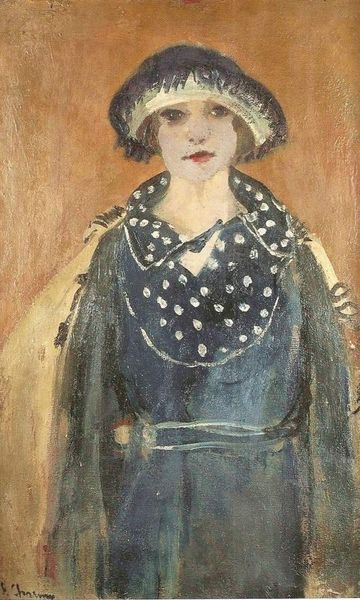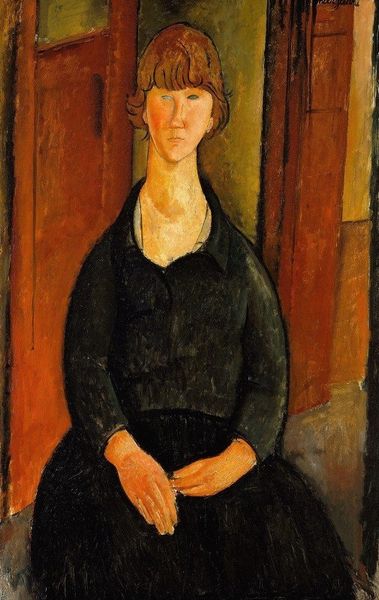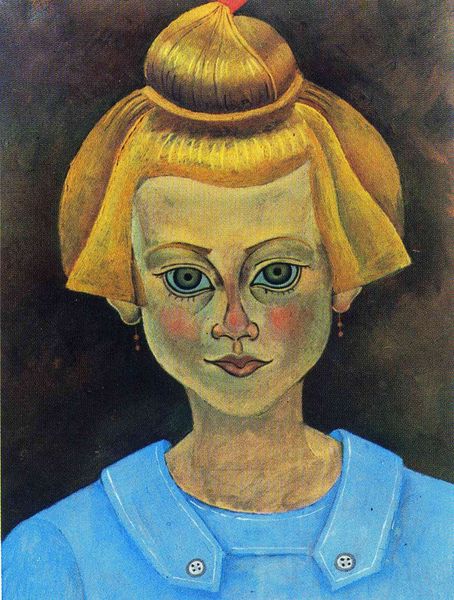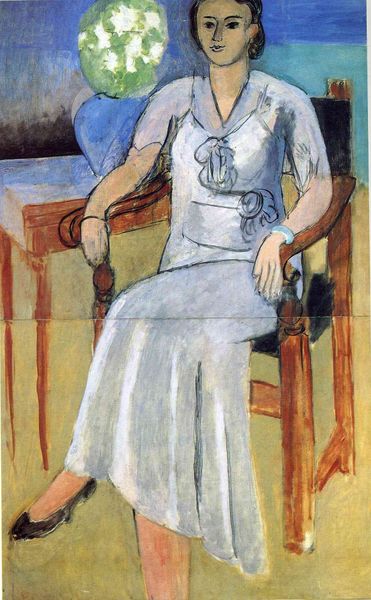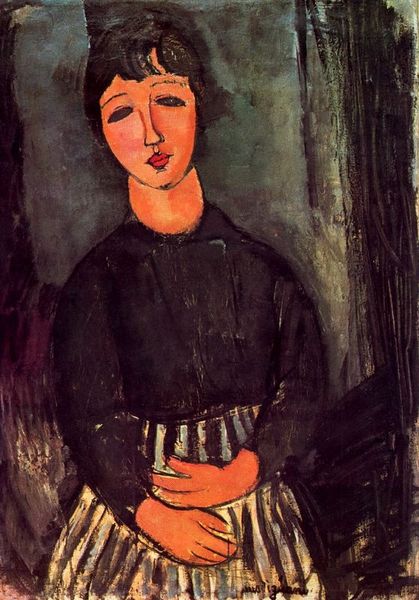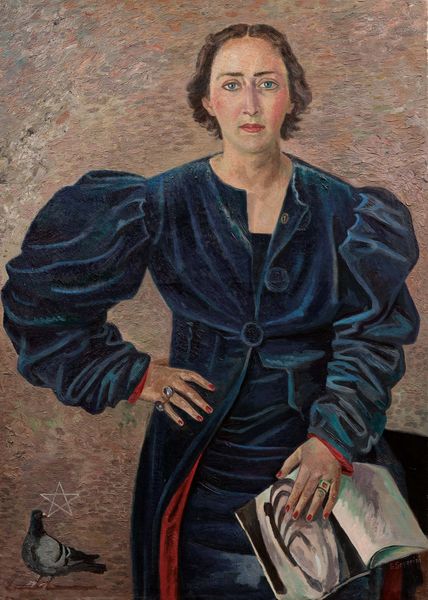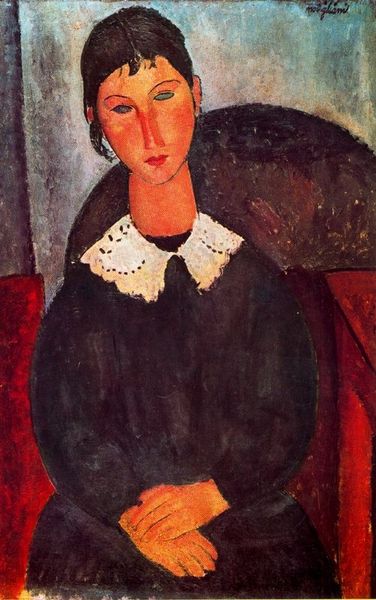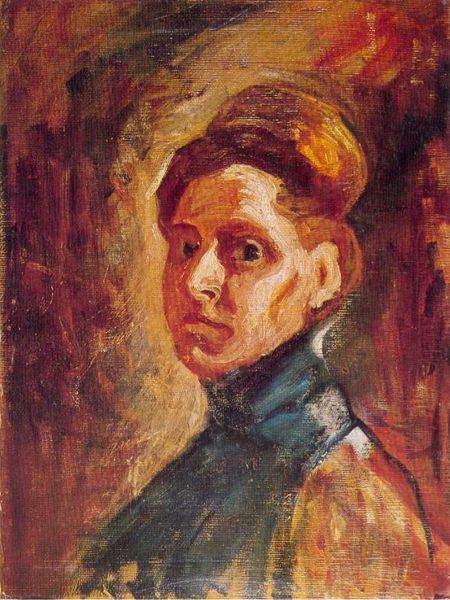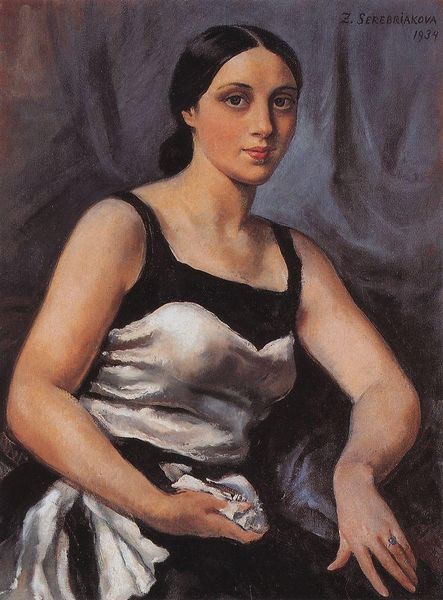
Copyright: Public domain
Curator: Here we have Kazimir Malevich’s 1934 painting, "Portrait of the Artist's Wife". It's a later work, quite different from his Suprematist abstractions. Editor: It’s unexpectedly…grounded. Almost austere. The palette is muted despite the red accents, and there's a starkness to her expression. The canvas gives a tactile sense of rough paint application too, quite noticeable, almost a push against conventional fine art finishes. Curator: Indeed. This piece arrived during a tumultuous period. Socialist Realism was becoming the dominant artistic mode, and avant-garde artists like Malevich faced increasing pressure to conform. This portrait signals his attempt to reconcile his abstract past with the demands for representational art. He’s working with the institution. Editor: And one sees it in the brushstrokes – almost laborious, bearing witness to the physicality of art-making in that sociopolitical climate, each stroke, one assumes, under tight political, institutional scrutiny? The blue of her jacket feels like it's built layer upon layer; a build-up, almost like adding physical labor for the viewer. Curator: Notice too the detail, or lack thereof, in the wife's clothing. While her face is rendered with considerable attention, the simplified shapes and flat areas of color point back to his abstract tendencies, doesn't it? He retains a symbolic link to Suprematism but tries to present it within an accepted format. The composition hints at tensions he navigated during that era. It seems like a silent declaration amid constraints. Editor: Fascinating to see the artist’s struggle rendered right here in material choices, the visible application, that palette. This isn’t just paint; this is a tangible wrestling of art’s place, its purpose, right down to how it is built up layer upon layer. Curator: It becomes a study of compromise, then, a visual record of shifting artistic landscapes, which really brings historical understanding into greater focus. It reveals the complex interactions between an artist and the demands of an evolving cultural institution. Editor: And it showcases art's resilient material capacity to reveal complex cultural tension within sociopolitical structures! Curator: Absolutely. It's not merely a portrait of a woman, but a portrait of a time and place. Editor: Quite. An understanding of not just the subject in front, but rather how making the art served as documentation of the period in a very tactile way!
Comments
No comments
Be the first to comment and join the conversation on the ultimate creative platform.

